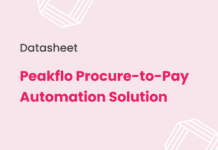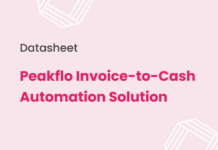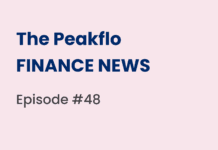In the dynamic world of business, procurement and finance departments play a pivotal role in ensuring organizational success. A critical aspect of their work revolves around the purchase order process, which involves the creation and management of purchase order forms.
In this blog, we will provide an in-depth understanding of what a purchase order is and how to create one.
What Is a Purchase Order?
A purchase order, commonly referred to as a PO, is a legal document that serves as a formal request from a buyer to a supplier or vendor for the purchase of goods or services. This document is initiated by the buyer before any goods or services are shipped, and it acts as a go-ahead for the seller to fulfill the requested transaction.
A purchase order generally outlines the type and quantity of items being purchased, the total costs, and expected delivery dates or time frames. For internal control, purchase orders are numerically managed using a sequential PO number on each form. Additionally, it includes the designated delivery locations, which can be particularly important for transactions involving multiple sites.
Why Do You Need a Purchase Order?
A purchase order simplifies the communication between the buyer and seller by providing the specifics of the purchase. Thus minimizing the chances of misunderstandings or disputes arising from the agreed-upon terms. While purchase orders are legally binding documents, their primary purpose is to improve approval processes, cost management, and internal control over purchases.
Purchase orders promote accountability, thus reducing the risk of financial or operational mishaps. They serve as a useful reference for audits, vendor reconciliation, and maintaining healthy relationships between organizations and their suppliers or vendors.
What are the Different Types of Purchase Orders?
Purchase orders (POs) can take various forms to accommodate different business needs and procurement processes. Here’s a brief overview of different types of purchase orders:
Standard Purchase Orders
The most common type of purchase order used in procurement. It outlines the specific products or services to be purchased, along with quantities, prices, and delivery dates.
Use Case: Suitable for one-time purchases where the details are well-defined.
Planned Purchase Orders
A tentative commitment to purchase goods or services in the future. It’s more of a long-term planning document and may not include specific details like quantities or delivery dates.
Use Case: Useful for forecasting and planning purposes, especially when the exact details of the purchase are not yet finalized.
Blanket Purchase Orders
A single, predetermined amount is set aside for multiple purchases over a specified time frame. It allows for multiple delivery dates and quantities under a single, overarching agreement.
Use Case: Ideal for situations where there is an ongoing relationship with a supplier, and frequent, smaller purchases are expected.
Contract Purchase Orders
A more formalized and structured type of purchase order which is typically part of a larger contractual agreement. It includes terms and conditions that govern the overall relationship between the buyer and the supplier.
Use Case: Commonly used in long-term relationships where there’s a need for detailed terms, conditions, and specifications.
Each type of purchase order serves a specific purpose and is chosen based on the nature of the procurement, the relationship with the supplier, and the level of detail required at the time of ordering. Organizations may use a combination of these types depending on their business needs and procurement strategies.
How a Purchase Order Works
Purchase orders offer a systematic and organized way for both buyers and sellers to document and track transactions. The following steps outline how a purchase order works, from the initial order placement to the fulfillment of goods or services and payment of the invoice:
1. The Buyer Orders Items from the Sellers and Drafts a Purchase Order
The process begins when the buyer decides to order items from a seller. The buyer creates a purchase order containing all necessary details, including products or services, quantities, prices, delivery dates, and payment terms.
2. The Buyer Sends the Purchase Order for an Internal Approval
Before sending the purchase order to the seller, the buyer shares the purchase order with relevant internal team members, such as managers, department heads, or accounting team members.
Make sure to use a consistent purchase order template with custom fields for each order to make the approval process easier.
Team members can collaborate on the purchase order, such as by adding comments, providing feedback, editing the template, and ensuring all concerns or suggestions are addressed.
This collaborative approach promotes clear communication within the organization to maintain transparency.
3. The Buyer Sends the Approved Purchase Order to the Seller
When sending a purchase order, set a clear deadline for both parties to manage schedules and ensure timely deliveries. Use this time to address questions or requests from either side. If the seller can’t fulfill the order, the buyer has enough time to find another vendor to prevent delays.
Miscommunication and price changes can cause delays and wasted time. Both parties must communicate openly and promptly to address any issues.
After ensuring all details are accurate and complete, the buyer sends the purchase order to their designated sales representative or point of contact at the seller’s organization.
4. The Seller Reviews the Purchase Order and Confirms It for Product or Service Fulfillment
Upon receiving the purchase order, the seller reviews it to determine if they can fulfill the buyer’s request, considering inventory, availability, price, and delivery date. If possible, they approve the order, making it a legally binding agreement.
When the buyer receives the products or services, they mark the purchase order as “Goods Received.” The buyer’s AP department later uses this information for a 3-way matching process, verifying the purchase order, goods received, and invoice before processing payment.
5. The Buyer Pays the Invoice
Once the products or services have been delivered, the seller issues an invoice to the buyer. The buyer then verifies that the invoice matches the agreed-upon terms in the purchase order and proceeds to pay the invoice.
This final step in the purchase order workflow ensures that both parties fulfill their financial obligations and maintain a healthy business relationship.
The Structure of a Purchase Order
Before learning how to create a purchase order, here are some of the key components to keep in mind:
- PO Number: A unique purchase order number is assigned to each PO, making it easier for both parties to track, reference, and manage the transaction
- Issue Date: The issue date is the day when the purchase order is created and sent by the buyer to the seller.
- Delivery Date: The expected delivery date, or a delivery window, should be included in the purchase order.
- Business Details: The purchase order should contain the necessary business information, such as the shipping and billing address, company name, and contact information for both the buyer and the seller.
- Payment Terms: Lastly, the purchase order should outline the agreed-upon payment terms, such as “paid upon delivery” or specific payment date options.
- Product Details: The purchase order should include specific details about the products, such as SKU numbers, model numbers, and brand names along with the description of each item.
- Product Quantity: The purchase order should clearly list the quantity of each item.
- Price per Unit: The price of each product per unit should be clearly stated in the purchase order.
- Total Amount: The purchase order should include the total amount for the goods and services being purchased. This total should reflect any applicable discounts and include sales tax if applicable.
This is an example of a purchase order that has all the components above:
How to Create a Purchase Order
There are various methods to create a purchase order.
- Word Document or PDF: Creating a purchase order using a Word document or Excel is a simple and accessible method. You can design or use a pre-existing free purchase order template to fill in the required information. While this method is straightforward, it lacks automation and may be more time-consuming.
- Accounting Software: Many accounting software solutions offer built-in purchase order modules or integrations. These tools help ensure that purchase orders are linked to the organization’s financial records.
- ERP Systems: ERP systems are comprehensive software solutions that manage various aspects of a business, including procurement, finance, and inventory management. Many ERP systems have built-in purchase order modules that enable users to create, send, and track purchase orders within the system.
- AP Automation Software: Automation software combines user-friendly interfaces with advanced features to facilitate the procurement process. These tools often provide customizable templates, approval workflows, and reporting features, making it easy for businesses to create, manage, and analyze their purchase orders.
Need of the Hour: Automate Purchase Order Process
Automating the purchase order process holds numerous advantages for businesses. Explore the following reasons to understand the need for automation in your purchase order process:
Take the Next Step with Peakflo
AP automation software such as Peakflo streamlines the entire procurement workflow, leading to a more efficient and friction-free process. Our system offers customizable templates, automated approval workflows, and integration with other business tools.
Here’s how you can generate, manage, and track purchase orders efficiently with Peakflo:
- Users can easily create purchase requests
- Or fast-track data entry with high-accurate OCR
- Approvers can swiftly grant approval for the PR, automatically converting it into a PO
- Peakflo will then send the PO automatically to the vendor!
- And you can do 3-way matching right in one place.
Sounds fun? Try out Peakflo and streamline your procurement-to-payment with us!









![Why AI Sales Calls Are Making Good Sales Reps Even Better [2025 Guide] ai sales calls](https://cdn-kmjmp.nitrocdn.com/YvtqmrsiHUxqerlSiZgbfzqqTARWTElr/assets/images/optimized/rev-a4aafe3/blog.peakflo.co/wp-content/uploads/2025/09/65168cf6-3001-4733-8cbc-12d5684cf449-218x150.webp)

































